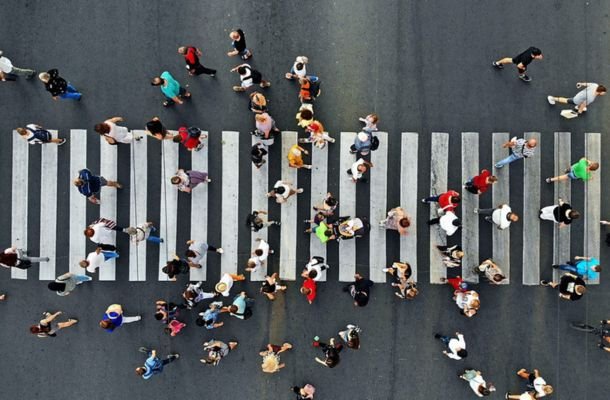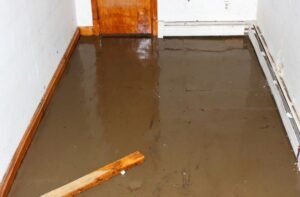Demographics of Albuquerque, NM

Albuquerque, New Mexico, known for its rich history and vibrant culture, is a city of great diversity and unique demographic characteristics. This comprehensive guide delves into the city’s demographics, providing a detailed look at its population, ethnic composition, age distribution, and more. Whether you’re a resident, a prospective mover, or just curious, this overview will offer valuable insights into the dynamic makeup of Albuquerque.
Introduction to Albuquerque
A Brief History
Albuquerque, founded in 1706, is New Mexico’s largest city and serves as the state’s economic and cultural hub. Its historical roots, spanning over three centuries, contribute to its diverse and evolving demographic landscape.
Geographic Location and Size
Situated in central New Mexico, Albuquerque covers approximately 189 square miles. The city’s location along the Rio Grande River and its elevation of 5,312 feet above sea level shape its unique demographic and environmental features.
Population Overview
Current Population Statistics
As of the most recent data, Albuquerque has a population of approximately 570,000 residents. This makes it the largest city in New Mexico and one of the most significant urban centers in the southwestern United States.
Population Growth Trends
Albuquerque has experienced steady population growth over the past few decades. From the 2000 census to the 2020 census, the city’s population grew by about 20%, reflecting both an increase in new residents and natural population growth.
Ethnic and Racial Composition
Diverse Communities
Albuquerque is renowned for its ethnic and racial diversity. The city’s demographic profile includes a mix of various racial and ethnic groups, each contributing to the city’s cultural richness.
Hispanic or Latino Population
The Hispanic or Latino community is the largest ethnic group in Albuquerque, making up about 48% of the population. This demographic influence is evident in the city’s cultural festivals, cuisine, and everyday life.
White Population
Non-Hispanic Whites constitute around 40% of Albuquerque’s population. This group represents a significant portion of the city’s cultural and historical heritage.
Native American Population
Albuquerque has a notable Native American presence, with approximately 4% of the population identifying as Native American. The city’s proximity to several Native American reservations adds to the cultural diversity.
African American Population
African Americans make up about 3% of Albuquerque’s population. This community contributes to the city’s cultural and social fabric through various organizations and events.
Asian Population
The Asian community, including individuals of Chinese, Indian, and Vietnamese descent, represents about 2% of the city’s population. This group contributes to Albuquerque’s diversity with its vibrant cultural and culinary presence.
Table: Ethnic and Racial Breakdown of Albuquerque (2024)
| Ethnic/Racial Group | Percentage |
|---|---|
| Hispanic or Latino | 48% |
| White (Non-Hispanic) | 40% |
| Native American | 4% |
| African American | 3% |
| Asian | 2% |
| Other | 3% |
Age Distribution
Age Demographics
Albuquerque’s age distribution reflects a balanced mix of age groups, contributing to a dynamic and diverse community.
Children and Adolescents (0-17 years)
Approximately 25% of Albuquerque’s population falls within the age range of 0 to 17 years. This age group reflects the city’s family-friendly environment and educational opportunities.
Working-Age Adults (18-64 years)
The majority of Albuquerque’s residents, about 60%, are working-age adults. This demographic is crucial to the city’s economic vitality and labor market.
Senior Population (65 years and older)
Seniors make up about 15% of the city’s population. Albuquerque’s senior community benefits from various services, including healthcare facilities and senior centers.
Table: Age Distribution of Albuquerque (2024)
| Age Group | Percentage |
|---|---|
| 0-17 years | 25% |
| 18-64 years | 60% |
| 65 years and older | 15% |
Educational Attainment
High School Graduates
A significant portion of Albuquerque’s population, around 88%, has graduated from high school. This high school graduation rate reflects the city’s commitment to education.
College Degrees
Approximately 33% of Albuquerque’s residents hold a bachelor’s degree or higher. This educational attainment rate indicates a well-educated workforce and access to higher education institutions.
Economic Overview
Employment Statistics
Albuquerque’s economy is diverse, with key sectors including healthcare, education, technology, and government. The city’s unemployment rate stands at approximately 4.5%, reflecting a stable job market.
Median Household Income
The median household income in Albuquerque is about $60,000. This figure represents the city’s economic health and the standard of living for many residents.
Housing and Living Conditions
Homeownership Rates
About 55% of Albuquerque’s residents own their homes, while the remaining 45% are renters. The city’s housing market includes a mix of single-family homes, apartments, and rental properties.
Cost of Living
The cost of living in Albuquerque is relatively affordable compared to other major cities in the U.S. The city offers a lower cost of housing, utilities, and transportation.
Cultural and Social Aspects
Cultural Diversity
Albuquerque’s diverse population contributes to its rich cultural scene. The city hosts numerous cultural festivals, including the Albuquerque International Balloon Fiesta and the Gathering of Nations Powwow.
Community Services
The city provides a range of community services, including public transportation, healthcare facilities, and educational institutions. These services support the needs of its diverse population.
Challenges and Opportunities
Demographic Shifts
Albuquerque faces challenges related to demographic shifts, including aging population trends and the need for affordable housing. However, these challenges also present opportunities for growth and development.
Future Projections
Looking ahead, Albuquerque’s demographic trends suggest continued diversity and population growth. The city’s evolving demographic profile will shape its future development and community planning.
Conclusion
Albuquerque’s demographics reflect a city of rich cultural diversity, a balanced age distribution, and a growing population. Its unique blend of ethnicities, age groups, and economic conditions creates a vibrant community that continues to evolve. Understanding these demographic aspects offers valuable insights into the city’s character and future prospects.
For more information about Albuquerque’s demographics, visit local government websites, community organizations, and other resources that provide up-to-date data and analysis.
Find us
Tuesday
Wednesday
Thursday
Friday
Saturday
Sunday
10 am – 10 am
10 am – 10 am
10 am – 10 am
10 am – 10 am
10 am – 10 am
10 am – 10 am









